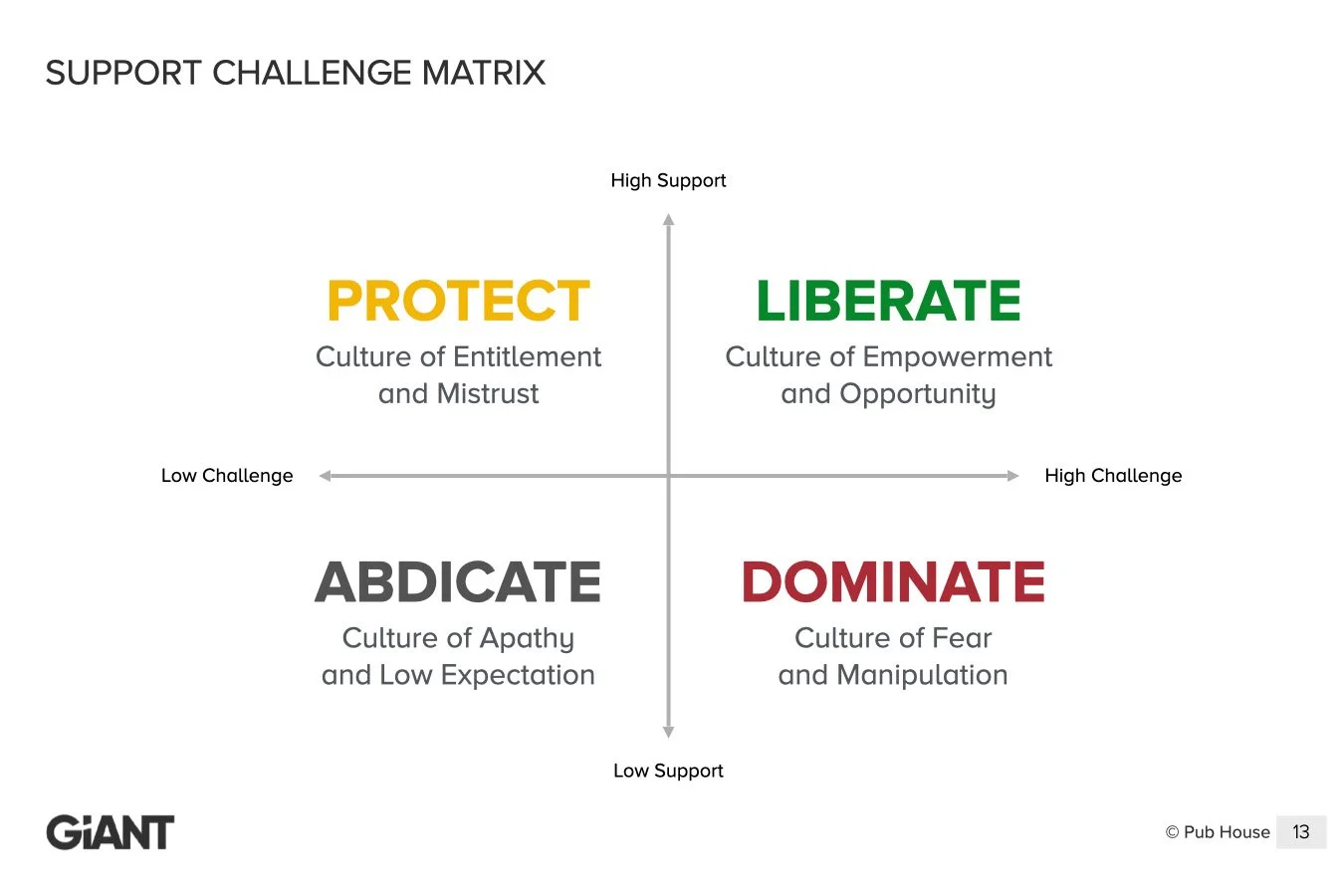Calibrating Support & Challenge
Welcome to another Toolkit Tuesday! This week, we’re diving into the Support Challenge Matrix, a powerful tool that helps leaders balance support and challenge to create empowered, high-performing teams.
The Challenge
Have you ever felt like your team isn’t operating at its full potential despite your best efforts?
Maybe you lean into support, ensuring your team feels cared for, but struggle to push them toward growth. Or perhaps you focus on challenge, driving results, but risk overwhelming your team in the process.
Recently we sat down with a leader and took them through our Khaki Leadership Audit. We asked about the culture they wanted to create. They said, "I want the business to feel like a family." And this is not the first time we have heard this.
Many leaders say they want to run their business “like a family.” What they usually mean is wanting to make sure everyone gets along and avoiding the discomfort of holding each other accountable. But here’s the thing—most families don’t create an environment where everyone is consistently fighting for the highest possible good of one another.
The result? People feel safe and valued but aren’t growing or achieving their full potential because no one is pushing them toward it. Ironically, some of these businesses are already successful, but by shifting to a culture that combines accountability with care, they could easily take their results to 10x their current potential.
The Tool: Support Challenge Matrix
Take a look at the Support Challenge Matrix to see how the quadrants map leadership tendencies:
The truth is, none of us are natural Liberators. Every leader tends to gravitate toward one quadrant of the Support Challenge Matrix over the others:
Protect (High Support, Low Challenge): A culture of entitlement and mistrust.
Dominate (High Challenge, Low Support): A culture of fear and manipulation.
Abdicate (Low Support, Low Challenge): A culture of apathy and low expectations.
Liberate (High Support, High Challenge): A culture of empowerment and opportunity.
Balancing support and challenge isn’t about reducing either—it’s about calibrating both to create a thriving, high-performing team.
This tool serves as both a diagnostic and roadmap for intentional leadership, helping you:
Understand your natural tendencies and their impact on your team.
Define your leadership standard as a Servant Leader.
Continuously adjust your approach to create a life-giving culture in the Liberate zone.
Why This Matters
The Support Challenge Matrix isn’t just a tool—it’s your compass for leadership. It helps you:
Reflect on what it’s like to be on the other side of your leadership.
Solicit and receive feedback objectively.
Ensure that your team is both supported and challenged for sustainable growth.
This tool isn’t about maintaining harmony at all costs—it’s about creating a culture that equips and empowers every team member to grow, thrive, and achieve their highest possible good.
Action Step
This week, take these steps to lead from the Liberate zone:
Reflect on Your Leadership Style: Are you more supportive or more challenging by nature?
Identify Your Quadrant: Use the matrix to determine whether you’re in Protect, Dominate, Abdicate, or Liberate.
Adjust Your Approach:
If you lean toward Protect: Increase challenge by setting higher expectations and encouraging growth.
If you lean toward Dominate: Provide more support with guidance and encouragement.
If you lean toward Abdicate: Commit to bringing both support and challenge to re-engage your team.
4. Aim for the Green Zone: Continuously calibrate both support and challenge to create a culture of empowerment and opportunity.
By mastering the balance of support and challenge, you can move beyond running a business like a family to leading one that thrives with a culture of empowerment and opportunity.
Want to explore how this tool can transform your leadership and organization? Let’s connect!

